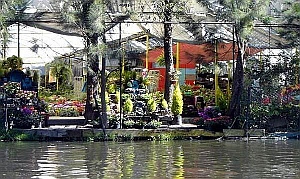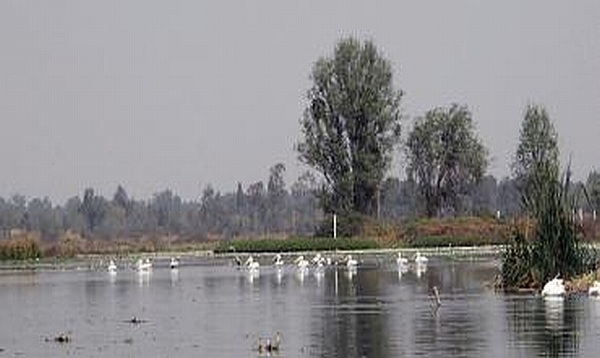Mexico City, Mexico - The once great floating gardens of Xochimilco, which means "garden of flowers" in the Náhuatl language of the Aztecs, are dying of serious neglect. On this point, everyone sadly agrees.
The many freshwater springs that once fed Lake Xochimilco (pronounced so-chi-MIL-co) were successively diverted to provide a water supply for Mexico City and the gardens, that once sustained the great Aztec capital Tenochtitlan and filled the bellies of the 235,000 Aztecs that lived there, have become a depository for the city's waste waters.
The ancient plots and their life-giving canals are weedy and abandoned, overrun by cattle, invaded by exotic fish, and sucked dry by urban sprawl. A dozen agencies of government have failed to save one of Mexico's natural wonders.
 |
| Farmers grow flowers for El Día de Los Muertos |
Since the water that reaches the canals is contaminated by residential and industrial pollution and cannot be used for food crops, the farmers there choose to increase flower cultivation in their little corner of Eden. They grow marigolds for El Día de los Muertos, the Day of the Dead.
"Which is appropriate since the place is dying." said Luis Zambrano, a biologist at the Autonomous National University of Mexico who is trying to save the life of Xochimilco.
The gardens have been sick for a very long time, ever since the Spanish conquistador Hernán Cortés arrived in 1519 and began draining the lakes. Today's canals are the deepest of what was a much larger system.
The problem is that they are now dying quickly, and there are signs the ecosystem is crashing. A ban on construction on the islands towards the end of the 20th century helped slow the process, but incremental building continued, as did the chaotic urbanization that both depletes and contaminates the water in the canals.
Another problem is that the canals, that once fed 50 square miles of gardens, are overwhelmed by foreign fish. African tilapia and Asian carp are thriving in the dirty waters and the fish are loaded with heavy metals now that the lake's only water source is wastewater treatment plants.
Maybe half the original wetlands used by the Aztec vassals remain, much of it degraded, but the land could bounce back. Asked if the place can survive, a respected historian of Xochimilco, Gloria Ale replied, "I would like to think so, but it might be impossible."
Fisherman Roberto Altamirano has been working to save Xochimilco, which is a UN World Heritage Site. For the past two years, he has been netting the exotic species from the canals. "We have removed 650 tons of fish," he said, "which is a lot of fish."
Martha Teresa Delgado, the environmental secretary for the Mexico City government said, "the solutions for saving Xochimilco are well known, but funding has been hard to come by and there are too many agencies involved, none of which have enough responsibility. Everyone is making promises and passing the blame when nothing gets done."


